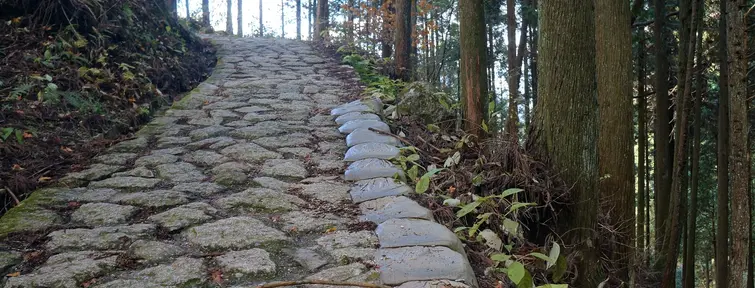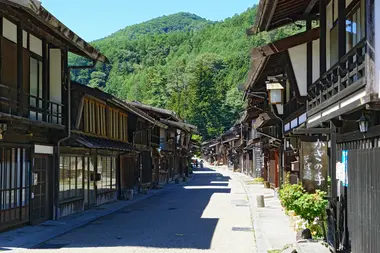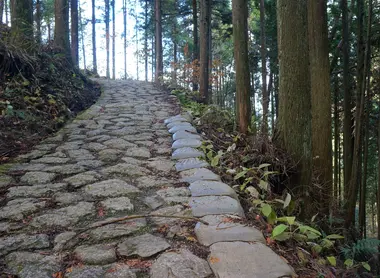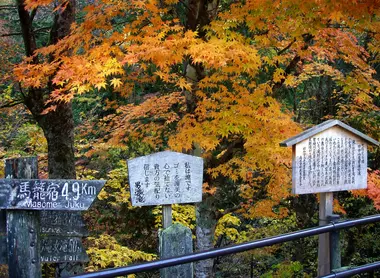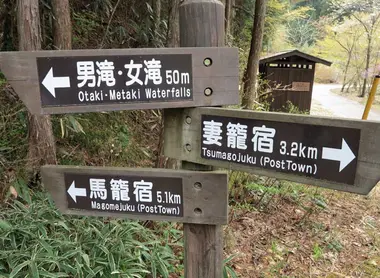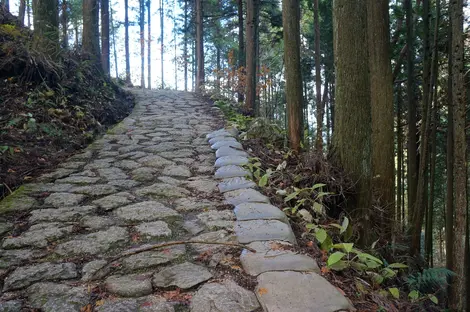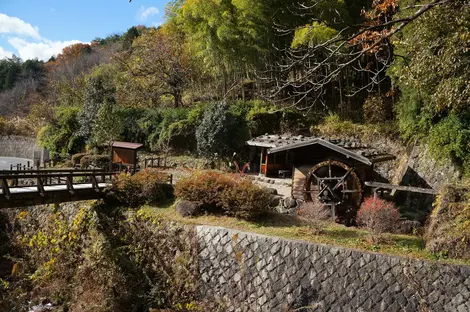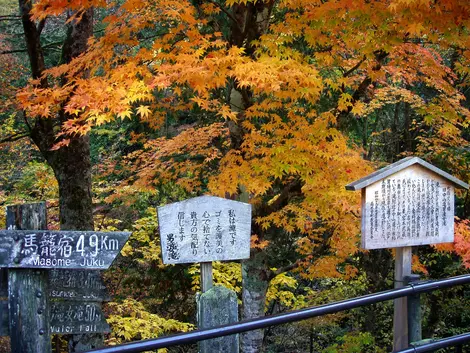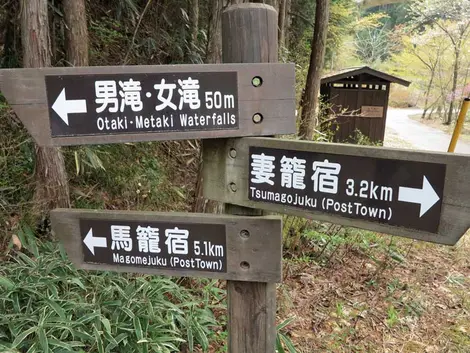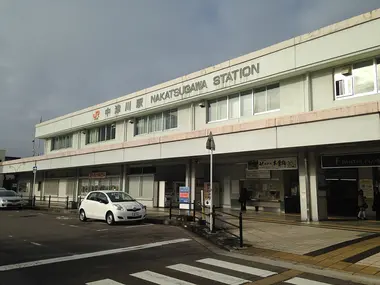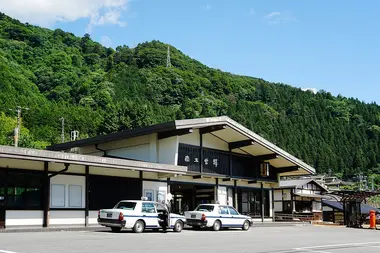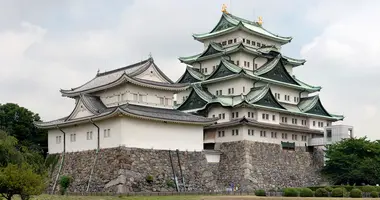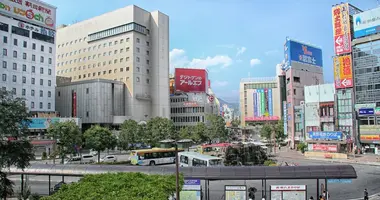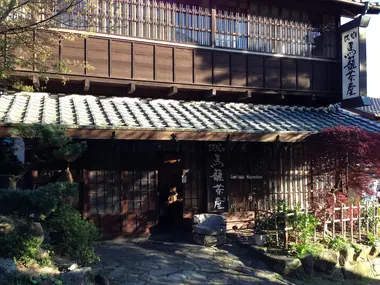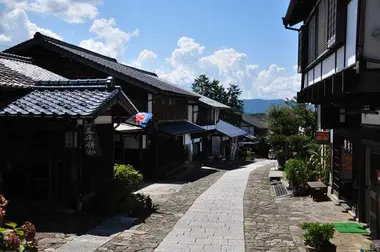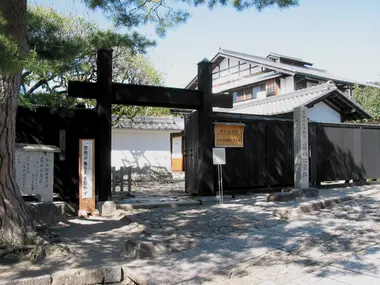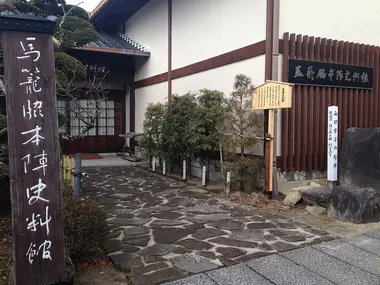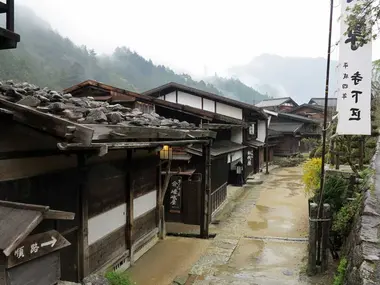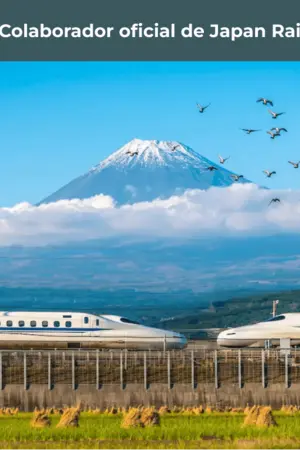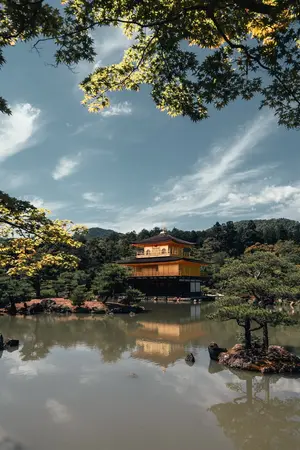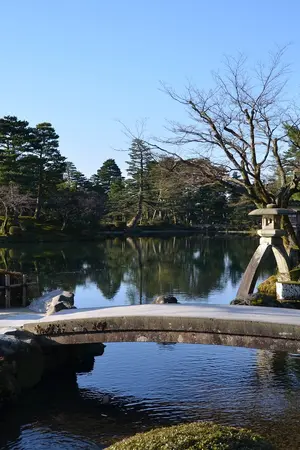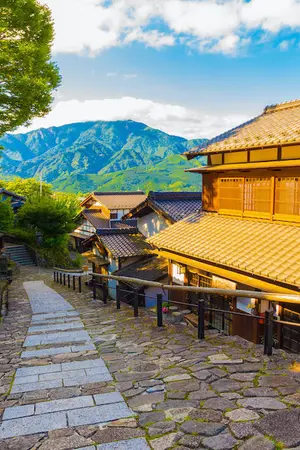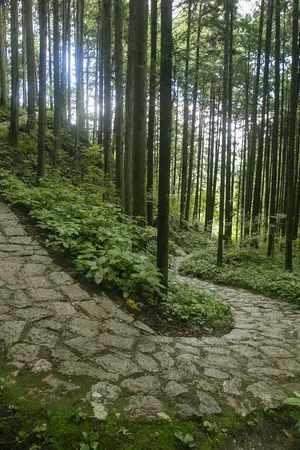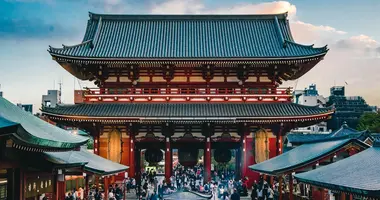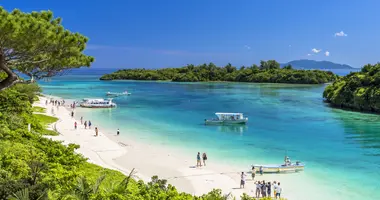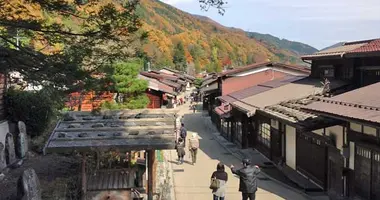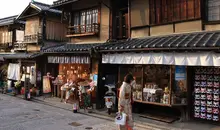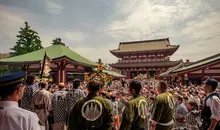La ruta Magome-Tsumago: Cómo llegar y explorar el histórico Nakasendo japonés
- Publicado el : 12/06/2025
- Por : Japan Experience
- Youtube
Enclavado en el corazón de Japón, el valle de Magome Tsumago Kiso ofrece un cautivador viaje en el tiempo por el histórico sendero de Nakasendo.
Durante el Periodo Edo en Japón, el Camino de Nakasendo (también conocido como el Camino de Kisokaido) sirvió como uno de los principales medios de transporte entre la capital de Kioto y la gran ciudad de Edo (actual Tokio). Atravesando el valle de Kiso, su importancia histórica es bien reconocida hoy en día, con muchas rutas y carreteras modernas que siguen su camino.
El Nakasendo, que significa "ruta de la montaña central", se extiende a lo largo de 500 kilómetros. Esta ruta interior era la preferida por muchos viajeros, incluidos los señores daimyo, comerciantes y peregrinos, ya que evitaba los traicioneros cruces fluviales de la ruta costera Tokaido. El Nakasendo desempeñó un papel crucial en la historia de Japón, facilitando el comercio, la comunicación y el intercambio cultural entre la capital imperial y la sede del poder del shogun.
A lo largo de su recorrido, el Nakasendo contaba con 69 pueblos de posta donde los viajeros podían descansar, reponer suministros y cambiar de caballo. Estas ciudades, conocidas como juku, se convirtieron en vibrantes centros de actividad y cada una desarrolló su propio carácter y tradiciones. En la actualidad, varias de estas ciudades de postas se han conservado o restaurado meticulosamente, ofreciendo a los visitantes una visión del pasado feudal de Japón.
Acerca de la ruta de senderismo Magome-Tsumago
Atravesando frondosos bosques y campos, la ruta de senderismo Magome-Tsumago es un bello recorrido escénico que parece sacado de una película. El sendero recorre 8 kilómetros (unas 5 millas); esta caminata relativamente tranquila se completa en unas 2-4 horas y está situada en Gifu y Nagano, dos de las prefecturas geográficamente más extensas de Japón, ambas sin salida al mar. Son prefecturas ricas en montañas onduladas y ríos caudalosos.
Como su nombre indica, discurre entre las ciudades de Magome y Tsumago, dos antiguas ciudades de postas que se encontraban en el Camino de Nakasendo y que se conservan tal y como eran en el Periodo Edo, con estructuras de madera y senderos de piedra.
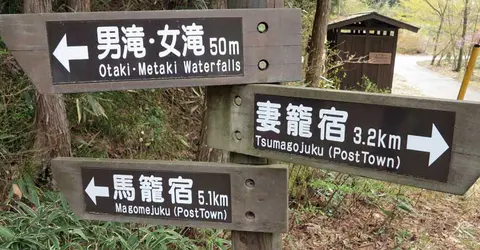
Señales que indican el sendero Magome-Tsumago
@Japan Visitor
Los pueblos de posta eran aldeas situadas a lo largo del Camino del Nakasendo que servían de parada a los viajeros con posadas, lugares para reabastecerse y otros servicios. Tsumago era la 42ª ciudad de posta y Magome la 43ª, de un total de 69 ciudades de posta. Para acceder al sendero Magome-Tsumago hay que ir a uno de estos dos pueblos y luego emprender el viaje a pie hasta el otro.
La ruta Magome-Tsumago discurre por hermosos paisajes con algunos pueblecitos entre las dos ciudades principales. A lo largo del camino, se pueden encontrar senderos de piedra tal y como eran en el Periodo Edo, con preciosas vistas del gran Valle de Kiso que son una delicia durante todo el trayecto. Especialmente durante el otoño, cuando las hojas cambian a vibrantes tonos burdeos y dorados, la atmósfera absorbe a los excursionistas.
Planifique su excursión: Transporte, logística y consejos prácticos
Para sacar el máximo partido a su aventura por el Nakasendo, tenga en cuenta los siguientes consejos:
Transporte: Los puntos de acceso más convenientes son las estaciones de Nakatsugawa (para Magome) y Nagiso (para Tsumago), ambas situadas en la línea principal JR Chuo. Desde estas estaciones parten autobuses locales a las respectivas ciudades postales.
Servicio de expedición de equipajes: Entre Magome y Tsumago existe un cómodo servicio de transporte de equipaje que le permitirá caminar cómodamente sin cargar con pesadas maletas. Sólo tiene que dejar sus maletas en el centro de información turística antes de las 11:30 y recogerlas en su destino después de las 13:00. Puede encontrar más información sobre este servicio aquí.
Alojamiento: Para vivir una experiencia auténtica, alójese en un ryokan o minshukan tradicional ryokan o minshuku en Magome o Tsumago. Estas posadas suelen ofrecer cena y desayuno, y permiten saborear la cocina local.
La mejor época para visitarlo: El sendero es accesible todo el año, pero la primavera (abril-mayo) y el otoño (octubre-noviembre) ofrecen el tiempo más agradable y un paisaje impresionante. El verano puede ser caluroso y húmedo, mientras que en invierno puede nevar ocasionalmente.
Artículos imprescindibles: Calzado cómodo para caminar, agua, tentempiés y dinero en efectivo (ya que muchos pequeños comercios de la zona no aceptan tarjetas de crédito)
Consejos prácticos: Vida salvaje Asegúrese de avanzar al ritmo que más le convenga, sobre todo en los meses más calurosos del verano. A lo largo del camino hay campanas que los excursionistas deben tocar para disuadir a los osos. En general, asegúrese de respetar la vida salvaje y el paisaje natural del camino.
Cómo llegar a Magome y Tsumago
Magome se encuentra en Gifu y Tsumago en Nagano, y ambas ciudades están justo en la frontera de las dos prefecturas. Se puede recorrer el sendero desde cualquiera de las dos ciudades. La elección del punto de partida dependerá del acceso, así como de qué ciudad le parece más atractiva para empezar y terminar. Consulte más detalles sobre Magome y Tsumago como destinos individuales.
Cómo llegar a Nagoya y Nagano para llegar a la ruta Magome-Tsumago
Tanto Nagoya como Nagano son destinos fácilmente accesibles desde la capital de Japón, Tokio. De Tokio a Nagoya se tarda alrededor de 1 hora y 35 minutos en el Tokaido Shinkansen. De Kioto a Nagoya se tarda sólo unos 30 minutos en el Shinkansen. De Tokio a Nagano se tarda alrededor de 1 hora y 20 minutos con el Hokuriku Shinkansen.
Cómo llegar a Magome
La estación de tren más cercana a Magome es la estación JR Nakatsugawa de la línea principal JR Chuo, que conecta Nagoya y Nagano.
La opción más rápida para llegar a esta estación es tomar el tren Shinano Limited Express :
- 1 hora y 15 minutos desde Nagoya (2.870 yenes).
- de 2 horas a 2 horas y 15 minutos desde Nagano (5.610 yenes).
El Chuo Line Sub Rapid train también es una opción:
1 hora y 50 minutos desde Nagoya (1.340 yenes).
Estos trenes no van ni salen de Nagano.
Desde la estación de Nakatsugawa, hay un autobús que sale de la parada nº 3. Se tarda unos 25 minutos en ir de la estación de Nakatsugawa a Magome (800 yenes).
Para quienes hayan dedicado su tiempo en la zona a realizar pintorescas excursiones por la naturaleza, caminar desde la estación de Nakatsugawa hasta Magome lleva unas 2-3 horas, y la caminata posterior hasta Tsumago otras 2-4 horas. Aunque lleva más tiempo, es una gran experiencia que se asemeja al viaje de quienes recorrieron el Nakasendo en su día
Cómo llegar a Tsumago
Tsumago se encuentra un poco al norte de Magome. La estación de tren más cercana es JR Nagiso Station, también en la línea principal JR Chuo. También se puede llegar utilizando el tren expreso Shinano Limited:
1 hora desde Nagoya (3.220 yenes)
2 horas desde Nagano (5.170 yenes).
Tsumago puede ser un lugar mejor para comenzar la ruta Magome-Tsumago si se viene de Nagano.
Sin embargo, sólo unos pocos trenes expresos limitados paran en la estación de Nagiso. Se puede tomar uno de estos trenes Shinano Limited Express hasta la estación de Nakatsugawa, donde se puede hacer transbordo para tomar un tren local hasta la estación de Nagiso.
Desde la estación de Nagiso, hay un autobús que va al centro de Tsumago y sólo tarda entre 7 y 10 minutos (300 yenes). Sin embargo, estos autobuses son menos frecuentes y no tienen un horario tan constante como los que van de la estación de Nakatsugawa a Magome, así que asegúrese de comprobar los horarios antes de viajar
Si el horario del autobús no se ajusta a su itinerario, también habrá taxis en la estación de Nagiso. El trayecto dura entre 5 y 10 minutos y cuesta entre 2.000 y 3.000 yenes. Caminar también es una gran opción desde la estación de Nagiso hasta Tsumago, ya que se tarda algo menos de 1 hora y es un gran precursor de la caminata Magome-Tsumago.
Más allá del sendero: Atracciones y experiencias en Magome y Tsumago
Aunque la ruta en sí es un punto culminante, tanto Magome como Tsumago ofrecen atracciones y experiencias adicionales. Eche un vistazo a más información sobre cada ciudad y qué hacer en ellas
Explorar Magome
Magome es la más concurrida de las dos ciudades, con una mayor afluencia de visitantes. Puede servir como un buen punto de partida para la Ruta Magome-Tsumago debido a su fácil acceso desde Nagoya, además de permitir a los viajeros pasar de un lugar más bullicioso al ambiente más tranquilo de Tsumago.
Sin embargo, hay muchas cosas que ver en Magome antes de salir de excursión. Algunas de sus atracciones más notables son las siguientes:
¡Comprar billetes de tren a Nagoya y Nagano!
- Museo Conmemorativo de Toson: Dedicado al escritor Shimazaki Toson, natural de la ciudad de Magome.
- Magome-juku Honjin: Posada restaurada que sirvió a altos funcionarios durante el apogeo del camino.
- Magome Chaya: Una antigua casa de huéspedes con servicio de comidas y refrescos. Pase la noche y viva una experiencia auténtica y tradicional
¡La ciudad de Magome es famosa por una serie de especialidades! Entre ellas están el oyaki, un bollo de masa similar a un bagel con diferentes rellenos, y el goheimochi, bolas de mochi asadas y glaseadas con una salsa especial y cubiertas de frutos secos.
Explorando Tsumago
Aunque no recibe tanto turismo activo como Magome, Tsumago es una encantadora escapada con su propio atractivo. Se trata de uno de los pueblos de postas mejor conservados de la Ruta del Nakasendo. De hecho, el pueblo está diseñado para que las líneas eléctricas y telefónicas queden ocultas a la vista, y la carretera principal no permite el acceso en coche. He aquí algunas atracciones que visitar en Tsumago:
- Rekishi Shiryokan: Un museo que documenta la historia de la zona, el sendero Nakasendo y el valle de Kiso en su conjunto.
- Waki-Honjin Okuya: Conservada desde el Periodo Edo, esta histórica casa de huéspedes servía a la élite de la época.
- Cascadas de Otake y Medaki: Situadas a las afueras del centro de Tsumago, estas cascadas sirvieron en su día como baños, uno para hombres y otro para mujeres.
Tsumago Juku es conocido por sus artesanías de madera que utilizan recursos locales en su producción. Conocida como Nagiso Rokuro-zaiku, es una forma de esculpir la madera utilizando ruecas y manipulación. En toda la ciudad se pueden adquirir diversos artículos.
Prolongue su aventura en el Nakasendo: Otras opciones de senderismo cercanas
Si desea explorar más a fondo el Nakasendo, considere estas otras opciones de senderismo:
- De Yabuhara a Narai: Esta ruta de 6 kilómetros le llevará por el paso de Torii, el punto más alto del Nakasendo
- De Nagiso a Nojiri: Un tramo menos transitado de 16 kilómetros que ofrece una caminata más desafiante a través de paisajes rurales
- De Karuizawa a Yokokawa: Este tramo de 17 kilómetros en la prefectura de Nagano ofrece diversos paisajes y lugares históricos
Para un viaje más extenso, puede unirse a Recorridos por el Nakasendo que recorren varios tramos del sendero a lo largo de varios días.
Preservar la tradición: El papel del turismo en el mantenimiento de las rutas históricas de Japón
La conservación y promoción de la ruta del Nakasendo y sus pueblos de posta desempeñan un papel crucial en el mantenimiento del patrimonio cultural de Japón. El turismo se ha convertido en un sustento económico vital para estas comunidades rurales, ayudando a financiar los esfuerzos de restauración y a mantener vivos los oficios y costumbres tradicionales.
Los visitantes del Valle de Kiso contribuyen a esta preservación:
- Apoyando a las empresas y artesanos locales
- Alojándose en casas tradicionales
- Participando en experiencias y talleres culturales
- Difundiendo la importancia histórica de la región
Al explorar el valle de Magome Tsumago Kiso, recuerde que no sólo está siendo testigo de la historia, sino que está participando activamente en su conservación para las generaciones futuras. Al recorrer con atención el antiguo Nakasendo, estará ayudando a garantizar que esta extraordinaria parte del patrimonio japonés siga prosperando en el mundo moderno.
